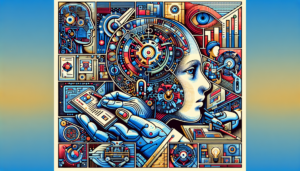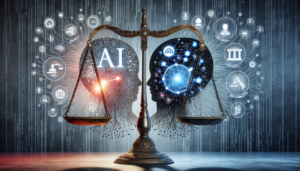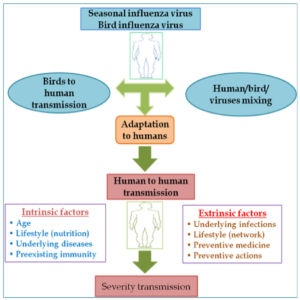In the ever-evolving world of technology, natural language processing (NLP) has become an essential tool for understanding and analyzing human language. From chatbots to voice assistants, NLP has made strides in improving how we interact with machines. But what are the recent breakthroughs in this field? In this article, we will explore the latest advancements in NLP, from transformer models revolutionizing language generation to transfer learning techniques that enable machines to comprehend context better than ever before. Get ready to be captivated by the exciting developments in NLP!
Introduction
Natural Language Processing (NLP) has experienced significant breakthroughs in recent years, thanks to the development of advanced models and techniques. These breakthroughs have paved the way for more accurate and efficient language processing, opening up new possibilities for applications in various fields. In this article, we will explore some of the most notable recent breakthroughs in NLP and delve into their backgrounds, key features, and applications.
Bidirectional Encoder Representations from Transformers (BERT)
Background
BERT, which stands for Bidirectional Encoder Representations from Transformers, is a revolutionary NLP model introduced by Google Research in 2018. It uses the Transformer architecture, a type of neural network that has proven to be highly effective in sequence-to-sequence tasks.
Key Features
One of the key features of BERT is its ability to capture the context of words in a sentence by considering the surrounding words. Unlike previous models that relied on left-to-right or right-to-left approaches, BERT employs a bidirectional training method, which enables it to better understand the meanings of words in context.
Another important feature of BERT is its pretraining process, where the model is trained on a large corpus of unlabeled text, allowing it to learn a wide range of linguistic patterns and relationships. This pretrained model can then be fine-tuned on specific tasks, resulting in improved performance and versatility.
Applications
BERT has found extensive applications in various NLP tasks, including sentiment analysis, text classification, and question answering. Its contextual understanding enables more accurate predictions and interpretations, making it a valuable tool in natural language understanding and processing.

Generative Pretrained Transformer 2 (GPT-2)
Background
GPT-2, or Generative Pretrained Transformer 2, is an advanced language model developed by OpenAI. Released in 2019, GPT-2 takes natural language generation to new heights, producing high-quality and coherent text that is almost indistinguishable from human-generated content.
Key Features
One of the remarkable features of GPT-2 is its vast size, with 1.5 billion parameters. This extensive parameterization allows the model to capture complex linguistic patterns and generate highly fluent and coherent text.
Additionally, GPT-2 employs a multi-layer Transformer architecture with a self-attention mechanism, enabling it to understand and generate text at different levels of detail. The model can handle a wide range of language tasks, from summarization and translation to creative writing and storytelling.
Applications
GPT-2 has been successfully applied in various domains, such as content generation for social media, chatbots, and virtual assistants. Its ability to generate human-like text makes it a valuable tool for automating content creation and enhancing user experiences.
Transformer-XL
Background
Transformer-XL is another significant breakthrough in NLP, introduced by researchers from Google Brain in 2019. This model addresses the issue of context understanding in longer sequences, which was a limitation in previous Transformer models.
Key Features
The key feature of Transformer-XL is its ability to capture longer-term dependencies and context in sequences. By using a recurrence mechanism called “segment-level recurrence,” the model can retain information from previous segments of a sequence, allowing for better understanding and processing of longer texts.
Transformer-XL also introduces a new positional encoding scheme, which further enhances the model’s ability to handle longer sequences by addressing the position information loss problem in the Transformer architecture.
Applications
Transformer-XL has proven to be effective in tasks requiring longer context understanding, such as language modeling, document classification, and machine translation. Its ability to handle longer sequences makes it a valuable tool in processing text data with rich contextual information.

XLNet
Background
XLNet, which stands for “eXtreme Language understanding NETwork,” is a state-of-the-art language model introduced by researchers from Google Brain and Carnegie Mellon University in 2019. It builds upon the strengths of previous models like BERT while addressing their limitations.
Key Features
The key feature of XLNet is its use of an autoregressive training method combined with a permutation-based approach. This allows the model to capture all possible dependencies between words in a sentence, regardless of their positions, resulting in improved context understanding.
XLNet also introduces a novel loss function called “permutation-based training,” which ensures that the model is capable of predicting each word in a sequence based on all other words, making it more robust and accurate in understanding complex language patterns.
Applications
XLNet has demonstrated superior performance in various NLP tasks, including text classification, question answering, and sentiment analysis. Its ability to capture complex dependencies and relationships between words makes it a powerful tool for understanding and processing natural language.
ERNIE
Background
ERNIE, or Enhanced Representation through kNowledge IntEgration, is a language representation model developed by researchers from Baidu in 2019. It focuses on incorporating external knowledge sources into the representation learning process.
Key Features
The key feature of ERNIE is its ability to integrate structured knowledge from external sources, such as knowledge graphs and other knowledge bases, into the language model training. By enriching the model’s representation with external knowledge, ERNIE is able to better understand and generate text that aligns with factual information and logical consistency.
ERNIE also utilizes a bidirectional Transformer architecture and a self-supervised learning approach, similar to BERT, enhancing its ability to capture contextual information and semantic relationships within sentences.
Applications
ERNIE has been successfully applied in various applications, including natural language inference, document classification, and search engine ranking. Its ability to incorporate external knowledge enhances the model’s understanding of the real world, making it highly valuable in tasks that require factual accuracy and logical consistency.
Flair
Background
Flair is an open-source NLP library developed by researchers from Zalando Research. Released in 2018, Flair focuses on state-of-the-art techniques for named entity recognition, part-of-speech tagging, and text classification.
Key Features
One of the key features of Flair is its contextual string embeddings, which capture the surrounding context of each word in a sentence. This fine-grained word representation allows for better understanding and disambiguation of word meanings.
Flair also offers a wide range of pre-trained language models for various languages, enabling researchers and developers to apply NLP techniques in different linguistic contexts.
Applications
Flair has been extensively used in tasks such as named entity recognition, sentiment analysis, and document similarity matching. Its focus on contextual embeddings and comprehensive language models makes it a valuable asset in understanding text data and extracting meaningful information.
Robustly Optimized BERT Pretraining Approach (RoBERTa)
Background
RoBERTa, short for Robustly Optimized BERT Pretraining Approach, is a variant of BERT developed by Facebook AI Research in 2019. It aims to improve upon the training process of BERT and achieve better performance on various NLP tasks.
Key Features
RoBERTa adopts a larger batch size and trains on more data compared to BERT, resulting in improved model learning and generalization. It removes the original next sentence prediction task used in BERT, enhances dynamic masking, and employs dynamic sentence ordering during pretraining.
By optimizing the pretraining process, RoBERTa achieves state-of-the-art results in several NLP benchmarks, showcasing its effectiveness in capturing contextual information and improving task performance.
Applications
RoBERTa has been widely adopted in various NLP tasks, including text classification, named entity recognition, and machine translation. Its robust training approach and improved performance make it a go-to choice for researchers and developers working on diverse language processing tasks.
Universal Sentence Encoder
Background
The Universal Sentence Encoder is a versatile NLP model developed by researchers from Google AI in 2018. It aims to generate fixed-length vectors as representations of variable-length sentences or text snippets.
Key Features
The key feature of the Universal Sentence Encoder is its ability to encode sentences or text snippets into dense vector representations. These representations are designed to capture semantic similarity and differences between sentences, enabling tasks such as semantic search, clustering, and sentence classification.
The model employs a transformer-based architecture, with a bidirectional encoder that considers the entire input sequence. It also incorporates a self-attention mechanism, enhancing its ability to capture important features within sentences.
Applications
The Universal Sentence Encoder has been successfully applied in various applications, including question answering, sentiment analysis, and text similarity matching. Its ability to generate compact and meaningful sentence representations makes it a valuable tool in understanding and comparing textual data.
Conclusion
These recent breakthroughs in natural language processing have propelled the field forward and unlocked new possibilities for language understanding and processing. From advanced models like BERT and GPT-2 to innovative approaches like ERNIE and RoBERTa, these techniques have improved performance in various NLP tasks.
Whether it is understanding context, generating coherent text, capturing longer-term dependencies, incorporating external knowledge, or creating effective sentence embeddings, these breakthroughs have significantly enhanced our ability to process and comprehend natural language. As NLP continues to evolve, these breakthroughs will undoubtedly shape the future of language understanding and offer exciting opportunities for applications in numerous fields.






















